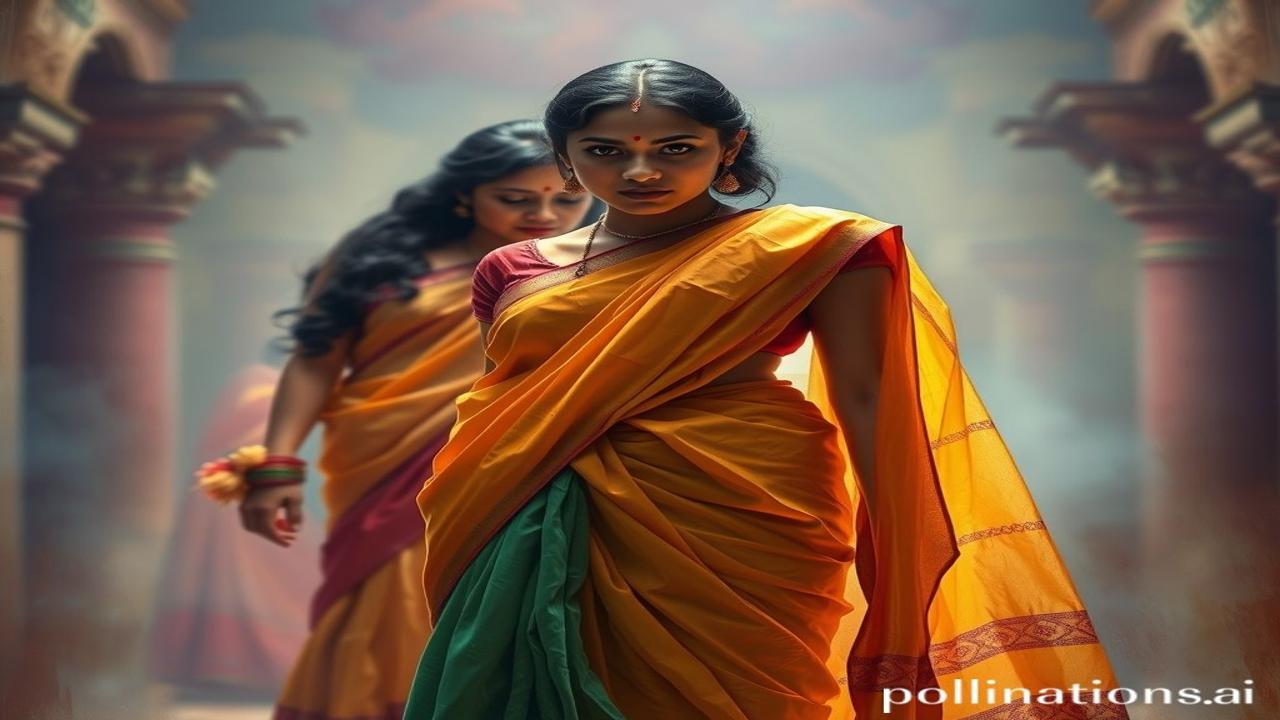Saree Saga: From Ancient Drapes to Modern Statements – A Journey Through Time!
Kabhi socha hai, woh resham ki sarsarahat, woh rangon ki jhankaar, kya sirf kapda hai? Nahi, mere dost! Yeh toh ek itihas hai, ek sanskriti hai, ek pehchaan hai – saree. Aao, waqt ki galiyon mein kho jayein, aur dekhein kaise badalti duniya ke saath, saree ke bandhan bhi badalte gaye.
The Saree: An Eternal Embrace of Indian History
What is the saree? It’s not just a garment; it’s a symbol, a language spoken through fabric, a living testament to Indian ingenuity. It’s an unstitched piece of cloth, draped in myriad ways, each telling a story of region, caste, and individual expression.
The origins of the saree can be traced back to the Indus Valley Civilization (2800–1800 BC), where evidence suggests the use of cotton and the art of weaving. Fragments of terracotta figurines wearing draped clothing further solidify this ancient connection. The word “saree” itself is derived from the Prakrit word “sattika,” mentioned in early Buddhist literature.
Why is it important? Because the saree is a mirror reflecting India’s rich tapestry of culture, art, and tradition. It’s survived empires, social reforms, and the onslaught of fast fashion. It’s a constant reminder of our roots, a powerful symbol of Bharatiyata (Indianness).
Through the Ages: People, Life, and The Saree
Imagine Ma Rukmini in the ancient city of Dwarka. “Aaj mandir mein utsav hai,” she whispers to her dasi, carefully adjusting her antariya (the lower garment, an early form of the saree) and uttariya (the shawl-like upper garment). Her saree, woven with intricate designs depicting Krishna’s leelas, reflects her devotion and her status.
Centuries later, Picture a fierce Rajputani warrior princess, galloping across the battlefield, her saree draped in a warrior style, allowing her freedom of movement while maintaining dignity. Her saree, dyed in the vibrant hues of saffron and red, symbolizes courage and sacrifice.
Then, there’s the artisan in Kanchipuram, diligently working at his loom, his hands moving with practiced grace, weaving the most exquisite silk sarees, each thread infused with generations of skill and knowledge. His sarees, adorned with gold zari and vibrant colors, are not just garments; they are heirlooms, legacies passed down through generations.
Aur phir, the humble farmer’s wife, toiling under the scorching sun, her simple cotton saree shielding her from the elements, her face etched with resilience and determination. Her saree, though plain in appearance, represents the strength and spirit of rural India.
“Yeh saree sirf kapda nahi, bhai,” a weaver in Varanasi might say, “yeh toh hamari pehchaan hai, hamari sanskriti hai.”
Saree: Echoes in Today’s India
Today, the saree continues to evolve, adapting to modern sensibilities while retaining its timeless charm. We see it gracing runways, red carpets, and corporate boardrooms. We see it in vibrant Bollywood films and traditional temple rituals. From the Nivi drape, popularized in Andhra Pradesh, to the seedha pallu of Gujarat, and the Bengali drape with its distinctive pleats, the saree continues to offer endless possibilities for self-expression.
The saree remains a vital part of Indian weddings, festivals, and religious ceremonies. It’s a symbol of auspiciousness, fertility, and prosperity. It’s a thread that connects us to our past and binds us together as a nation. The saree is shakti (power), kala (art), and dharohar (heritage) woven into one.
Did You Know?: Saree Secrets and Surprises!
Log samajhte hain ki saree hamesha se “Nivi drape” style mein pehni jaati thi, lekin asli sach yeh hai ki Nivi drape toh British Raj ke time mein popular hui, jab Jnanadanandini Debi ne ise adopt kiya. Before that, saree draping styles were much more regional and diverse!
Saree Sensation: A Visual and Sensory Symphony
Imagine the air filled with the fragrance of sandalwood and jasmine during a South Indian wedding, the bride resplendent in a Kanjeevaram silk saree, its intricate gold zari shimmering under the temple lights. Feel the smooth texture of the silk against your skin, hear the gentle rustle as you move, and see the vibrant colors reflected in the eyes of your loved ones.
Or picture the bustling streets of Kolkata during Durga Puja, the women draped in crisp cotton sarees with bold borders, their faces radiant with joy, the sounds of dhak drums echoing in the air, and the sweet smell of incense filling your nostrils.
The saree is a feast for the senses, a vibrant tapestry woven with colors, textures, sounds, and smells.
A Final Thread: The Saree’s Enduring Legacy
“Vasudhaiva Kutumbakam” – the world is one family. And the saree, in its diverse forms and interpretations, represents this unity in diversity, this inherent Indianness that binds us together. It is more than just a garment; it’s a living legacy, a testament to the creativity, resilience, and spirit of India.
As the poet says, “Har dhaaga ek kahani hai, har rang ek ehsaas, saree toh Bharat ki aatma hai, sadaa rahegi khaas.”
